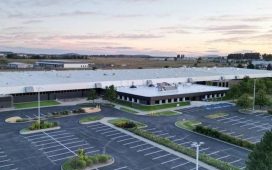These somewhat unlikely partnerships could be a win for both the nuclear power industry and large tech companies. Tech giants need guaranteed sources of energy, and many are looking for low-emissions ones to hit their climate goals. For nuclear plant operators and nuclear technology developers, the financial support of massive established customers could help keep old nuclear power plants open and push new technologies forward.
“There [are] a lot of advantages to nuclear,” says Michael Terrell, senior director of clean energy and carbon reduction at Google. Among them, he says, are that it’s “clean, firm, carbon-free, and can be sited just about anywhere.” (Firm energy sources are those that provide constant power.)
But there’s one glaring potential roadblock: timing. “There are needs on different time scales,” says Patrick White, former research director at the Nuclear Innovation Alliance. Many of these tech companies will require large amounts of power in the next three to five years, White says, but building new nuclear plants can take close to a decade.
Some next-generation nuclear technologies, especially small modular reactors, could take less time to build, but the companies promising speed have yet to build their first reactors—and in some cases they are still years away from even modestly sized demonstrations.
This timing mismatch means that even as tech companies tout plans for nuclear power, they’ll actually be relying largely on fossil fuels, keeping coal plants open, and even building new natural gas plants that could stay open for decades. AI and nuclear could genuinely help each other grow, but the reality is that the growth could be much slower than headlines suggest.
AI’s need for speed
The US alone has roughly 3,000 data centers, and current projections say the AI boom could add thousands more by the end of the decade. The rush could increase global data center power demand by as much as 165% by 2030, according to one recent analysis from Goldman Sachs. In the US, estimates from industry and academia suggest energy demand for data centers could be as high as 400 terawatt-hours by 2030—up from fewer than 100 terawatt-hours in 2020 and higher than the total electricity demand from the entire country of Mexico.
There are indications that the data center boom might be decelerating, with some companies slowing or pausing some projects in recent weeks. But even the most measured projections, in analyses like one recent report from the International Energy Agency, predict that energy demand will increase. The only question is by how much.
Many of the same tech giants currently scrambling to build data centers have also set climate goals, vowing to reach net-zero emissions or carbon-free energy within the next couple of decades. So they have a vested interest in where that electricity comes from.










